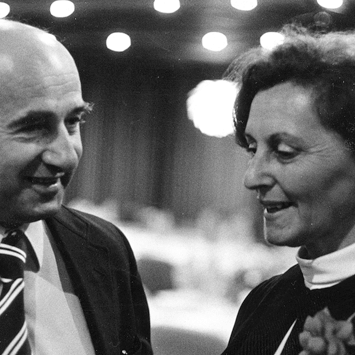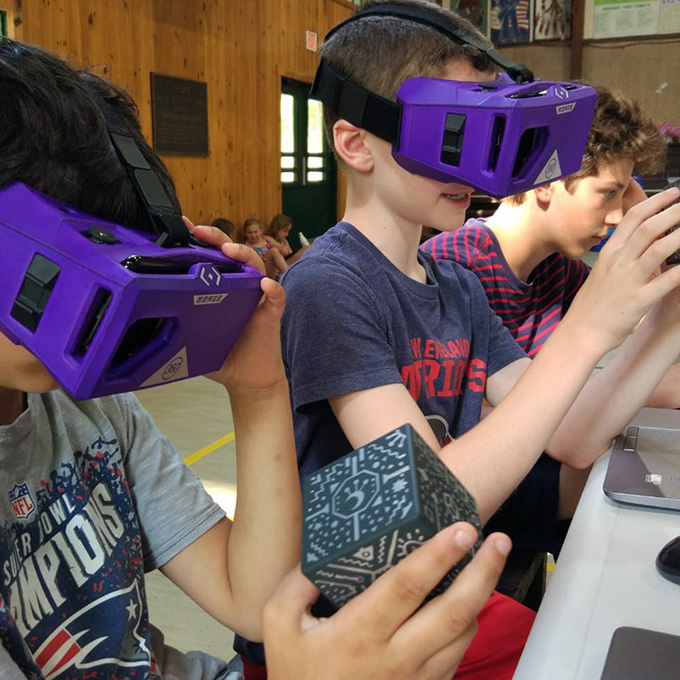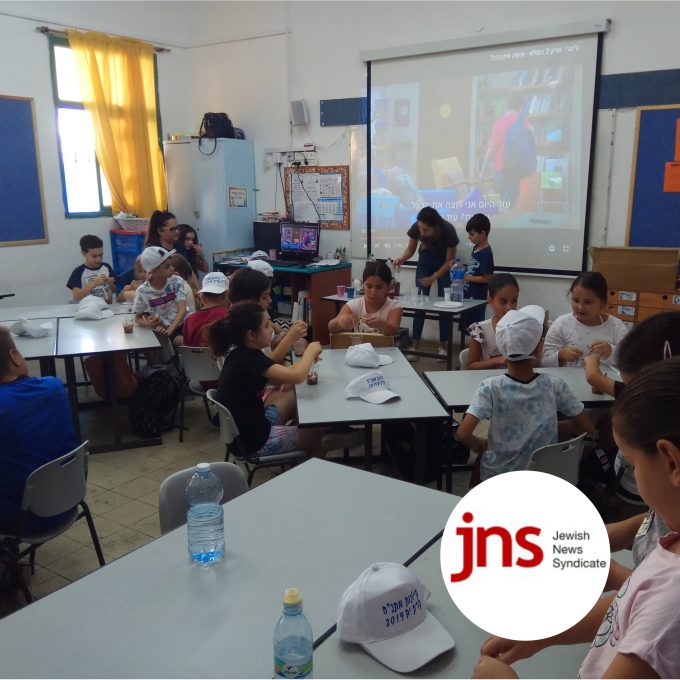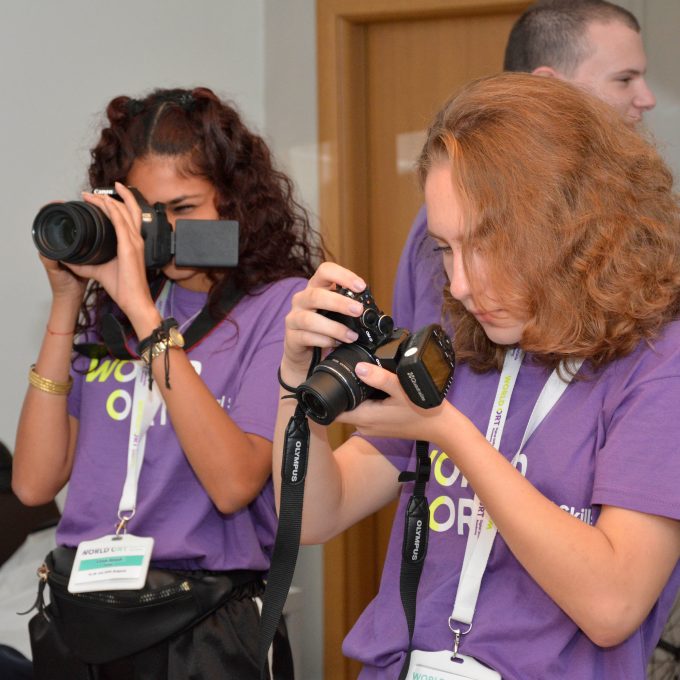Joseph (Julik) Harmatz was a partisan during the war and he employed that fighting spirit to lead World ORT through a pivotal moment in its history. Compelled to destroy in the struggle against the Nazis he was just as brave and determined in the constructive and creative decades he committed to ORT’s mission of Educating for Life.
It was his membership of Nakam (Revenge), a group of partisans led by the great Israeli poet Aba Kovner a”h, which brought him some public attention in recent years. “What we did,” he told The Observer newspaper in 1998, “straightened out the backs of many people.”
Countless thousands more can hold their heads high as a result of his achievements with ORT over a period of 33 years. In Israel and later in London, where he was based as Director General of World ORT, Harmatz proved himself to be a man of vision, enthusiasm and practical application, gathering around him a staff of innovative people dedicated to excellence in education for people of all levels of ability. He left a deep impression on all who knew him.
The Rt Hon Lord Young of Graffham, former Thatcher Government minister who served as President of World ORT during Harmatz’s final three years in the organisation, said:
“Not only was he one of the heroes of the resistance in Lithuania during the war, he was an inspiration to all who worked with him. With his passing goes a great chapter in the history of our people.”
Harmatz was born in Rokiškis, Lithuania, in 1925, the same year that another towering ORT figure, Jacob Oleiski a”h, was appointed principal of the ORT school in Kovno. Oleiski was a family friend and the landsmen eventually worked together for ORT in Israel.
In 1980, he left Israel for London to take up the post of Director General of the World ORT Union from Max Braude a”h. In the 13 years he spent in this role he was consulted by the then President of the Board of Trade, Michael Heseltine, and numerous Education Secretaries on setting up vocational schools in the United Kingdom.
He was an adviser to UNESCO, sat on various UN committees, and expanded World ORT’s operations in the developing world. In China, Harmatz advised on how small communities could be revived and saved from the exodus to the big cities. He even went to Germany to consult on overseas aid projects.
He told journalist Michael Freedland that he saw the irony in that, given his partisan activities, but added: “’It was a different world. And I was loyal to my organisation.”
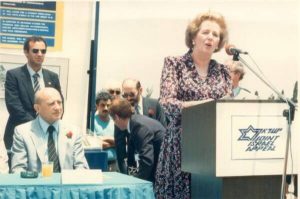
Joseph Harmatz and Margaret Thatcher, Israel 1987.
He established World ORT’s Academic Advisory Council, an international group of prominent scholars who monitor educational trends and help to determine World ORT’s educational strategy. Members during Harmatz’s time included the Oxford philosopher and historian of ideas, Sir Isaiah Berlin, and biophysicist Professor Ephraim Katzir, who had earlier been Israel’s fourth president.
A full list of his achievements would fill a book; among them were the expansion of the ORT network in the Americas and Europe, the creation of an effective technical department, and the foundation of the ORT Braude International College of Technology in Karmiel. Indeed, such was his contribution that the Harmatz School of Engineering in Jerusalem, which was constructed and inaugurated while he was Director General, was named after him.
However, it was the return of ORT to the land of its birth, Russia, for which many best remember him. As glasnost and perestroika opened up the Soviet Union, Harmatz was quick to see the potential. Despite resistance from some of his colleagues, he sought out influential individuals who could help restore ORT’s presence in the region more than 50 years after Stalin had snuffed it out.
In early 1989, at a conference in Sofia on the use of computers in schools, he met Professor Alexei Semenov, who had been recommended to him by Dr Alberto Rescigno, Superintendent for the Hueneme District Schools in California. A member of the Soviet Academy of Sciences, Professor Semenov was in charge of a Moscow institute aiming to teach high-tech on a large scale. Harmatz quickly established a rapport with the dynamic and like-minded young scientist.
“He had already forged contacts with institutions overseas and knew how far behind they were in the Soviet Union, how much they lacked, and how much was needed,” Harmatz recalled.
Professor Semenov, now a member of World ORT’s Board of Trustees, remembered their first meeting. “We went to a restaurant and he explained ORT to me. I knew absolutely nothing about it. And the more I heard about it the more excited I became. I decided we had to do it.”
A few months later, Harmatz was in Moscow as a guest of Professor Velichov, Vice-President of the Academy of Sciences. He was taken on a tour of several schools and the ZIL factory for heavy trucks and machinery. Meetings with the Deputy Minister of Education and the Head of Moscow municipality’s education department and a similarly busy trip to Leningrad followed. Within a year, World ORT had signed formal agreements with the authorities to set up resource centres.
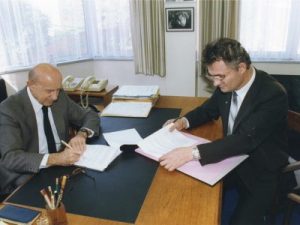
Joseph Harmatz, and Russian Minister of Education Yevgeny Tkachenko signing the letter of understanding between World ORT and Russia.
“Although computer literacy in the regular high schools was improving, the technical schools were looking for more, for ways of applying computers to technological education, ways of preparing the graduates for industry, and ways to make the computer a tool for industrial production. ORT’s educational kits – robots, sensors, programmable logic controllers, optic fibres and so on – precisely met their needs,” Harmatz wrote in his book, Life with ORT.
He also secured a critical partnership with IBM, which had just signed an agreement with President Gorbachev to supply the Russian education system with 50,000 personal computers.
The first resource centres were in Moscow, St Petersburg (formerly Leningrad), Kiev, Nizhni Novgorod, and Dnepropetrovsk and equipped with ORT systems. “We started training local teachers, who found in our centres tools and ideas beyond their dreams,” Harmatz wrote.
The resource centres paved the way for the establishment of World ORT’s current education network in the region serving more than 27,000 students annually. The network includes 17 schools which attract children from across the spectrum of Jewish life with their unique combination of superb STEM and Jewish education, and job training programmes for Jewish communities.
Professor Semenov remembers Harmatz as “one of the wisest men I have met. I learned a lot from him how to deal with people, how to be firm and kind at the same time”.
“He was able to persuade people, not through order or force but just because of a feeling of what was right, what was good; he emanated that feeling to other people, talking slowly, giving examples and telling stories. He passed that on to his generation in ORT and it’s been passed down to new generations; and it’s reflected in the way ORT works today.”
Professor Semenov
Harmatz noted that ORT’s return to Russia was, for him, an emotional issue as he recalled how the World ORT office in Moscow had ceased to exist with the disappearance of its director, Jacob Tzigelnizki hy”d, in 1938.
But it was, above all, an operational success which had required considerable effort at all levels; a milestone in ORT’s history of which he was proud and which he was pleased to see his successors had built on.
“We helped to introduce technology education on a wide scale, and at the same time were able to reach and teach the Jewish people, who did not at that stage exist as communities. In addition to technology training for the public at large, our purpose was to prepare those Jews who intended to make Aliya for their new life, and help those who intended to remain to create productive, sustainable lives for their families,” he wrote.
Harmatz’s passing marks a generational shift in World ORT’s history, the last of the larger-than-life characters who shaped the organisation as the Jewish people emerged from the horrors of genocide into the long-dreamed of era of self-determination.
World ORT President Dr Conrad Giles paid tribute to Harmatz’s legacy.
“It is a truism that the status of our institutions of today figuratively stand tall by standing on the shoulders of those who came before us. We in World ORT were the beneficiary of the dedicated work of Joe Harmatz. He will be missed by all who knew and worked with him but most importantly his legacy of a strong and vibrant World ORT, which he led for so many years, remains.”
World ORT Director General and CEO Shmuel Sisso added: “Taken individually any of his achievements would be laudable; together they are an awesome legacy. And yet they represent just the tip of the iceberg of his 33 years of creativity and construction in the service of our mission of Educating for Life. Joseph’s life, his service to the Jewish People, to the State of Israel, and to ORT, will continue to inspire for generations to come. I am honoured and humbled to occupy the position which he held with such distinction.”
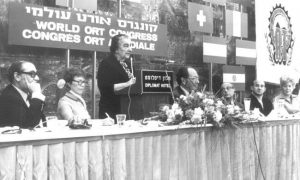
Joseph Harmatz (second right) listens as Golda Meir addresses the World ORT Congress.
Harmatz himself saw in ORT’s development a mirroring of the transmission of tradition as described in Pirkei Avot. Moses received the Torah at Mt Sinai and his learning was handed down through the centuries to Shimon HaTzadik, who believed the world was based upon the precepts of Torah, labour and loving kindness. In these precepts Harmatz saw ORT’s ideology: Torah as study, learning and teaching; labour as working, creating and serving the community; and loving kindness as assisting our fellow human beings in need.
Loving kindness was characteristic of his beloved wife, Gina Harmatz a”h, in whose name World ORT runs an annual competition inviting its students to submit videos showing how they are contributing to the betterment of society.

Joseph Harmatz a”h
And throughout his work for ORT he never forgot those of his generation who could not share in it. Recalling how at festive occasions such as the opening of a new school he would don a kippah and recite Shecheyanu, the blessing thanking God for having sustained us to reach this day, he wrote: “Within myself I would be thinking of all those who had not survived, whose lives had been cut short during the Holocaust: the teachers and the students, their families, our families, the six million. How many of those could have lived, created and achieved, for themselves and for humanity! May their memory be blessed and remain with us forever.”
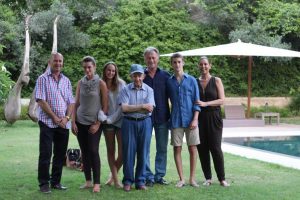
Joseph Harmatz with his sons, Zvi and Ronny, and grandchildren.

